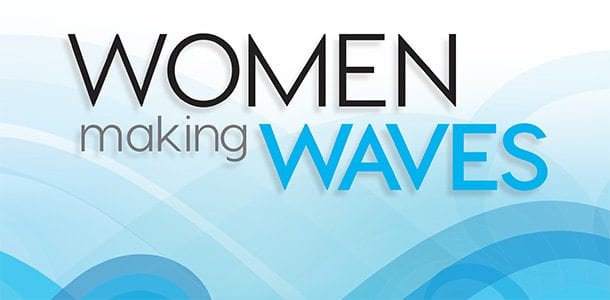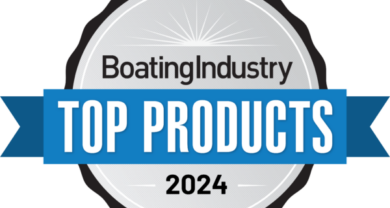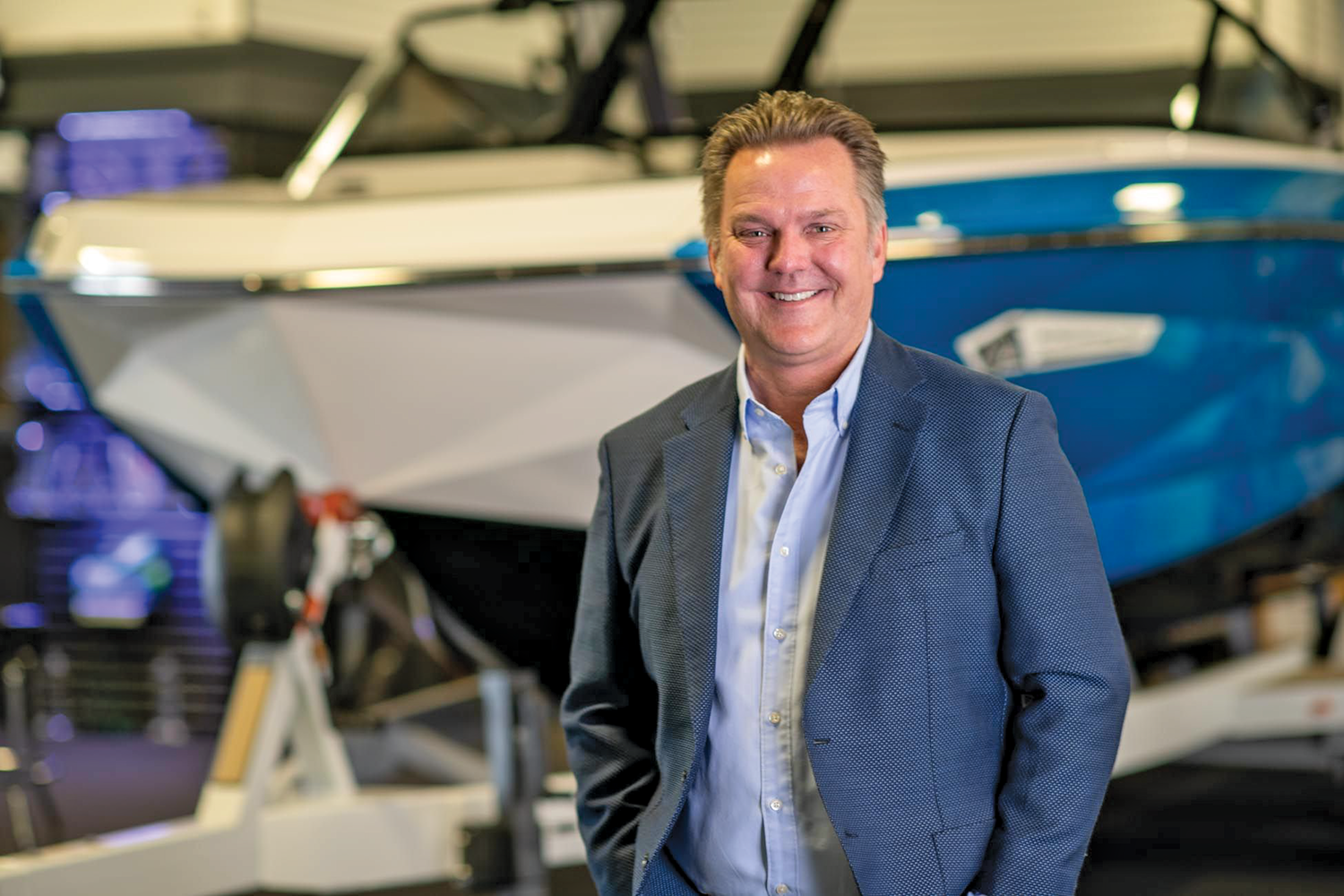Safety, technology focus for trailer manufacturers
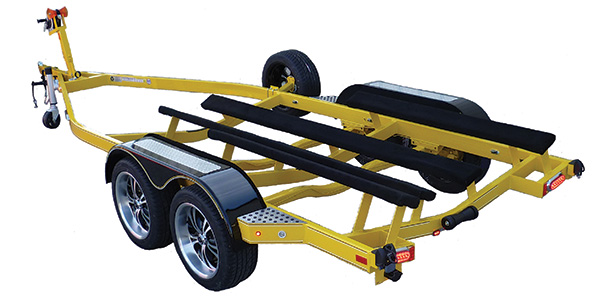
Certification and compliance offer dealers, boat builders certainty
Most people don’t spend a lot of time thinking about the trailer when they buy a boat, being understandably focused on finding the right vessel to meet their needs.
But that only makes it more important for the industry to give the category more attention to ensure safety and compliance with federal regulations that govern trailers.
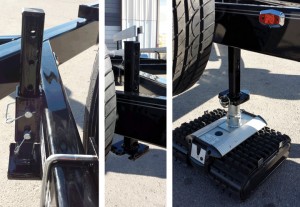 “The consumer doesn’t understand it, so it’s up to the industry,” said Gary Potter, vice president/general manager of EZ Loader and past president of the National Association of Trailer Manufacturers. “It’s our responsibility to educate the consumer on how important certification is.”
“The consumer doesn’t understand it, so it’s up to the industry,” said Gary Potter, vice president/general manager of EZ Loader and past president of the National Association of Trailer Manufacturers. “It’s our responsibility to educate the consumer on how important certification is.”
The National Marine Manufacturers Association offers a trailer certification program that ensures trailer design meets the standards in the NMMA Trailer Certification Handbook. Trailers are certified in the areas of identification plates, capacity ratings, couplings, safety chains, lighting, winches, brakes, registration procedures and conspicuity systems.
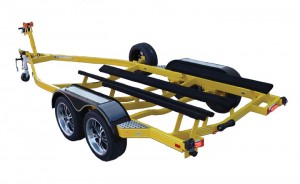
NATM also has a compliance verification process to help its members comply with federal motor vehicle safety standards. It started as a voluntary program in 2002 but is now required of all NATM members.
“All the things that are on the checklist, every trailer manufacturer is required by law to abide by,” said NATM executive director Pam O’Toole Trusdale. “One of the complaints of our members is that everyone says they comply … but there’s evidence out there that a lot of companies don’t.”
Making compliance mandatory shows the members’ commitment to safety and helps to level the playing field, Trusdale said.
“There are different lines of trailers: some are more expensive, some are less, but if it’s less expensive because they’re cutting corners … they’re not competing fairly,” she said. “They’re competing by breaking the law.”
When companies are failing to meet standards, it’s often not intentional. Instead, it usually results from an inability to keep up with the constantly changing regulations governing trailers. So even those companies that think they are complying may not be, especially if they don’t participate in one of the industry programs, Trusdale said.
“Our compliance program isn’t to catch people doing things wrong, it’s to help them do it right,” she said. “We give them ample opportunity and advice on making those corrections, but if they don’t, we cancel their membership. We just feel that strongly, because essentially if they’re not meeting those requirements, they’re not abiding by the law.”
New technology
It may not be as flashy as a new boat design but trailer manufacturers are also continuing to invest in new technology and designs.
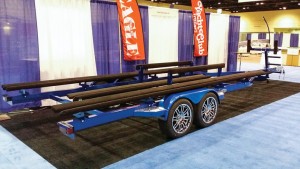
For example, Eagle Trailer recently invested in 3D laser scanning tools that have drastically improved how it makes its custom trailers. Instead of the traditional (and time-consuming) method of measuring and fitting a boat on a trailer frame, Eagle has simplified the process with laser measuring technology.
“With this laser scanner we go out and scan around the boat six or seven scans,” said Jeff Harklau, vice president of sales and development for Eagle and Yacht Club Trailers. “Instead of a couple hundred points of reference on the boat, we’re starting with 2 million. … It’s like looking at HD TV and comparing it to black and white.”
It was an expensive investment but one that will pay off long term in accuracy and efficiency, he said.
The company is also working on developing new trailers to meet changing boat designs. Its new trailers for the Volvo Penta Forward Drive, for instance, incorporate a new open back end to accommodate the forward-facing prop and lower profile of the engine.
Yacht Club and Eagle have completely redesigned their pontoon trailers to reflect the increasingly larger pontoons on the market.
“Over the last 12 months, we’ve built 97 different models of pontoon trailers,” Harklau said. “We now have three series: a more economical, mid-range and upper-range. We cover a wide range – if they want something basic to really nice.”
The new models include a number of features such as improved frame designs to prevent twisting and flexing, step up fronts and new suspension systems.
At EZ Loader, the top new trailer innovation this year is the Illusion Series, Potter said, which offers a top-lighted step.
“When the lights are on, it has an opaque treadplate to it,” he said. “At night people can put their foot up on it, and it lights up so they can see the step at night time.”
Potter is also proud of the company’s I-Tube construction – an extruded tube within the I-beam to offer more strength and corrosion protection.
Do the Robot
Beyond trailers, EZ Loader is hoping to shake up the category with its newest accessory, the Robo, a remote-controlled “trailer parking robot.”
“It’s aimed at the guy who doesn’t want to have to push the boat around,” Potter said. “If you can work your television remote control, you can work this one and move your trailer around that simply.”
EZ Loader first introduced the robot to the industry last fall at IBEX and the Marine Dealer Conference & Expo, where the product garnered plenty of attention. The company first showed it off to consumers at the Miami International Boat Show earlier this year.
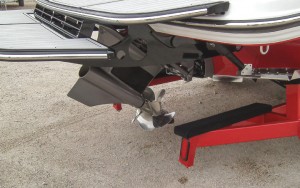
The manufacturer is a Danish company, Kronings, which has been selling it for several years in Europe and Australia as the “Camper Trolley.” The company contacted EZ Loader in early 2014 as it was looking for a U.S. partner to crack the North American market.
So far the majority of buyers in the U.S. have been consumers, but Potter said he hopes to see that change.
“I thought it was going to be a great dealer item to move boats around the showroom, but we’re finding it’s a little too slow for their purposes,” he said.
While dealers have liked it, they want something faster than its 29-feet-per-minute rate. EZ Loader is working with Kronings to build a model that is 50 percent faster with a goal of appealing to those dealers.
Currently, it is available in two models: the RTV3700, for moving up to 3,700 pounds, and the RTV5500, for moving up to 5,500 pounds. With its large treads, it will work on any firm surface, Potter said.
It will work with any trailer, tube or channel, but EZ Loader has built in a welded bracket to its trailers to make it easier to use. A bolt-on bracket is available for other trailers.

